Instruction
Go ahead, let your hips turn in the backswing
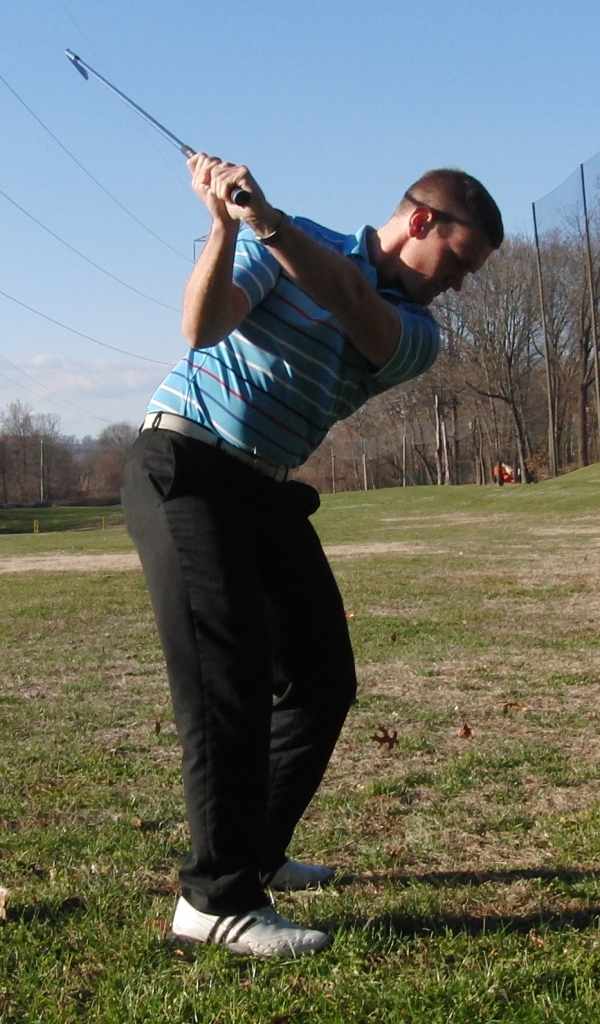
As an instructor, I see a lot of golf swings every day and a large majority of the golfing public seems to have an obsession with not turning their hips in their golf swing.
Magazines and books have been pushing the idea that if we can restrict our hip turn and rotate the shoulders substantially more, we have the formula for more power: Degree of Shoulder Turn – Degree of Hip Turn = Power. Giving this idea to a novice golfer is like letting a child play with matches; there’s going to be a lot of damage to repair.
Photo 1 depicts a swing where a golfer is attempting to restrict hip turn and generate as much shoulder turn as possible, while Photo 2 shows a golfer who is embracing the notion that the hips need to turn.
What is noticeable is that when restricting the hips the golfer is forced to turn their shoulders and arms on a much flatter plane. Many golfers struggle with taking the club too far inside during their take away and lifting the club to reach the top of their backswing, the classic slicer move (inside-up-over the top). The inside takeaway occurs from the fact that the hips have not rotated and the hands and arms feel the need to fan or rotate the club to generate that feel of rotation.
Photo 1
Photo 2
Going forward the golfer is unable to rotate the hips so they lift the club to the top of the back swing resulting in a very flat shoulder turn (Photo 3) and a loop (Photo 4) that will force them to come over the top.
Photo 3
Photo 4
Allowing the hips to rotate will help alleviate some of these issues and allow you to create more shoulder turn (even with some steepness to them) in the process.
Photo 5
Photo 6
Photos 5 and 6 show a golfer who has allowed his hips to turn on the backswing and, in return, his arms and hands have rotated properly. That created more connection between the arms and chest. The golfer was also able to generate more shoulder turn by allowing his hips to turn more during the takeaway, and potentially breaking the dreaded habit of coming inside, up, and over the top.
So instead of restricting the hips, let them rotate for a more fundamentally sound golf swing.
- LIKE114
- LEGIT12
- WOW1
- LOL0
- IDHT1
- FLOP1
- OB0
- SHANK18
Instruction
The Wedge Guy: The easiest-to-learn golf basic

My golf learning began with this simple fact – if you don’t have a fundamentally sound hold on the golf club, it is practically impossible for your body to execute a fundamentally sound golf swing. I’m still a big believer that the golf swing is much easier to execute if you begin with the proper hold on the club.
As you might imagine, I come into contact with hundreds of golfers of all skill levels. And it is very rare to see a good player with a bad hold on the golf club. There are some exceptions, for sure, but they are very few and very far between, and they typically have beat so many balls with their poor grip that they’ve found a way to work around it.
The reality of biophysics is that the body moves only in certain ways – and the particulars of the way you hold the golf club can totally prevent a sound swing motion that allows the club to release properly through the impact zone. The wonderful thing is that anyone can learn how to put a fundamentally sound hold on the golf club, and you can practice it anywhere your hands are not otherwise engaged, like watching TV or just sitting and relaxing.
Whether you prefer an overlap, interlock or full-finger (not baseball!) grip on the club, the same fundamentals apply. Here are the major grip faults I see most often, in the order of the frequency:
Mis-aligned hands
By this I mean that the palms of the two hands are not parallel to each other. Too many golfers have a weak left hand and strong right, or vice versa. The easiest way to learn how to hold the club with your palms aligned properly is to grip a plain wooden ruler or yardstick. It forces the hands to align properly and shows you how that feels. If you grip and re-grip a yardstick several times, then grip a club, you’ll see that the learning curve is almost immediate.
The position of the grip in the upper/left hand
I also observe many golfers who have the butt of the grip too far into the heel pad of the upper hand (the left hand for right-handed players). It’s amazing how much easier it is to release the club through the ball if even 1/4-1/2″ of the butt is beyond the left heel pad. Try this yourself to see what I mean. Swing the club freely with just your left hand and notice the difference in its release from when you hold it at the end of the grip, versus gripping down even a half inch.
To help you really understand how this works, go to the range and hit shots with your five-iron gripped down a full inch to make the club the same length as your seven-iron. You will probably see an amazing shot shape difference, and likely not see as much distance loss as you would expect.
Too much lower (right) hand on the club
It seems like almost all golfers of 8-10 handicap or higher have the club too far into the palm of the lower hand, because that feels “good” if you are trying to control the path of the clubhead to the ball. But the golf swing is not an effort to hit at the ball – it is a swing of the club. The proper hold on the club has the grip underneath the pad at the base of the fingers. This will likely feel “weak” to you — like you cannot control the club like that. EXACTLY. You should not be trying to control the club with your lower/master hand.
Gripping too tightly
Nearly all golfers hold the club too tightly, which tenses up the forearms and prevents a proper release of the club through impact. In order for the club to move back and through properly, you must feel that the club is controlled by the last three fingers of the upper hand, and the middle two fingers of the lower hand. If you engage your thumbs and forefingers in “holding” the club, the result will almost always be a grip that is too tight. Try this for yourself. Hold the club in your upper hand only, and squeeze firmly with just the last three fingers, with the forefinger and thumb off the club entirely. You have good control, but your forearms are not tense. Then begin to squeeze down with your thumb and forefinger and observe the tensing of the entire forearm. This is the way we are made, so the key to preventing tenseness in the arms is to hold the club very lightly with the “pinchers” — the thumbs and forefingers.
So, those are what I believe are the four fundamentals of a good grip. Anyone can learn them in their home or office very quickly. There is no easier way to improve your ball striking consistency and add distance than giving more attention to the way you hold the golf club.
More from the Wedge Guy
- The Wedge Guy: Golf mastery begins with your wedge game
- The Wedge Guy: Why golf is 20 times harder than brain surgery
- The Wedge Guy: Musings on the golf ball rollback
- LIKE86
- LEGIT13
- WOW6
- LOL1
- IDHT0
- FLOP4
- OB1
- SHANK8
Instruction
Clement: Stop ripping off your swing with this drill!

Not the dreaded headcover under the armpit drill! As if your body is defective and can’t function by itself! Have you seen how incredible the human machine is with all the incredible feats of agility all kinds of athletes are accomplishing? You think your body is so defective (the good Lord is laughing his head off at you) that it needs a headcover tucked under the armpit so you can swing like T-Rex?
- LIKE0
- LEGIT2
- WOW2
- LOL0
- IDHT0
- FLOP0
- OB0
- SHANK2
Instruction
How a towel can fix your golf swing

This is a classic drill that has been used for decades. However, the world of marketed training aids has grown so much during that time that this simple practice has been virtually forgotten. Because why teach people how to play golf using everyday items when you can create and sell a product that reinforces the same thing? Nevertheless, I am here to give you helpful advice without running to the nearest Edwin Watts or adding something to your Amazon cart.
For the “scoring clubs,” having a solid connection between the arms and body during the swing, especially through impact, is paramount to creating long-lasting consistency. And keeping that connection throughout the swing helps rotate the shoulders more to generate more power to help you hit it farther. So, how does this drill work, and what will your game benefit from it? Well, let’s get into it.
Setup
You can use this for basic chip shots up to complete swings. I use this with every club in my bag, up to a 9 or 8-iron. It’s natural to create incrementally more separation between the arms and body as you progress up the set. So doing this with a high iron or a wood is not recommended.
While you set up to hit a ball, simply tuck the towel underneath both armpits. The length of the towel will determine how tight it will be across your chest but don’t make it so loose that it gets in the way of your vision. After both sides are tucked, make some focused swings, keeping both arms firmly connected to the body during the backswing and follow through. (Note: It’s normal to lose connection on your lead arm during your finishing pose.) When you’re ready, put a ball in the way of those swings and get to work.

Get a Better Shoulder Turn
Many of us struggle to have proper shoulder rotation in our golf swing, especially during long layoffs. Making a swing that is all arms and no shoulders is a surefire way to have less control with wedges and less distance with full swings. Notice how I can get in a similar-looking position in both 60° wedge photos. However, one is weak and uncontrollable, while the other is strong and connected. One allows me to use my larger muscles to create my swing, and one doesn’t. The follow-through is another critical point where having a good connection, as well as solid shoulder rotation, is a must. This drill is great for those who tend to have a “chicken wing” form in their lead arm, which happens when it becomes separated from the body through impact.
In full swings, getting your shoulders to rotate in your golf swing is a great way to reinforce proper weight distribution. If your swing is all arms, it’s much harder to get your weight to naturally shift to the inside part of your trail foot in the backswing. Sure, you could make the mistake of “sliding” to get weight on your back foot, but that doesn’t fix the issue. You must turn into your trial leg to generate power. Additionally, look at the difference in separation between my hands and my head in the 8-iron examples. The green picture has more separation and has my hands lower. This will help me lessen my angle of attack and make it easier to hit the inside part of the golf ball, rather than the over-the-top move that the other picture produces.


Stay Better Connected in the Backswing
When you don’t keep everything in your upper body working as one, getting to a good spot at the top of your swing is very hard to do. It would take impeccable timing along with great hand-eye coordination to hit quality shots with any sort of regularity if the arms are working separately from the body.
Notice in the red pictures of both my 60-degree wedge and 8-iron how high my hands are and the fact you can clearly see my shoulder through the gap in my arms. That has happened because the right arm, just above my elbow, has become totally disconnected from my body. That separation causes me to lift my hands as well as lose some of the extension in my left arm. This has been corrected in the green pictures by using this drill to reinforce that connection. It will also make you focus on keeping the lead arm close to your body as well. Because the moment either one loses that relationship, the towel falls.


Conclusion
I have been diligent this year in finding a few drills that target some of the issues that plague my golf game; either by simply forgetting fundamental things or by coming to terms with the faults that have bitten me my whole career. I have found that having a few drills to fall back on to reinforce certain feelings helps me find my game a little easier, and the “towel drill” is most definitely one of them.
- LIKE12
- LEGIT2
- WOW2
- LOL0
- IDHT0
- FLOP2
- OB0
- SHANK8
-

 19th Hole1 week ago
19th Hole1 week agoDave Portnoy places monstrous outright bet for the 2024 Masters
-

 19th Hole3 weeks ago
19th Hole3 weeks agoThings got heated at the Houston Open between Tony Finau and Alejandro Tosti. Here’s why
-

 19th Hole2 weeks ago
19th Hole2 weeks agoTiger Woods arrives at 2024 Masters equipped with a putter that may surprise you
-

 19th Hole2 weeks ago
19th Hole2 weeks agoReport: Tiger Woods has ‘eliminated sex’ in preparation for the 2024 Masters
-

 19th Hole5 days ago
19th Hole5 days agoTwo star names reportedly blanked Jon Rahm all week at the Masters
-

 19th Hole5 days ago
19th Hole5 days agoNeal Shipley presser ends in awkward fashion after reporter claims Tiger handed him note on 8th fairway
-

 19th Hole4 days ago
19th Hole4 days agoReport: LIV Golf identifies latest star name they hope to sign to breakaway tour
-

 19th Hole3 weeks ago
19th Hole3 weeks agoAddiction, spinal fusion, and scam artists – Everything Anthony Kim revealed in candid interview with David Feherty

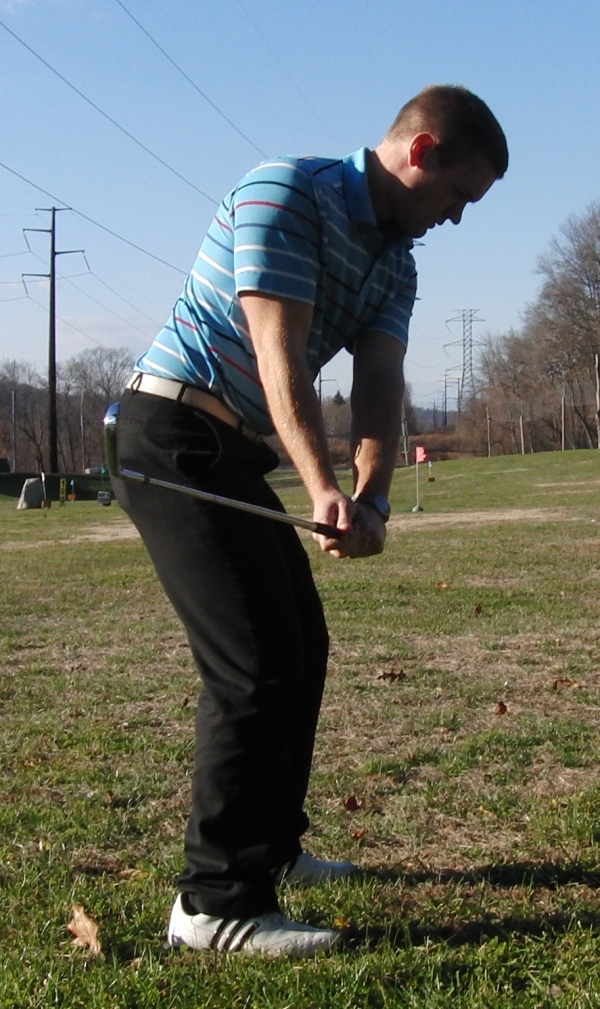
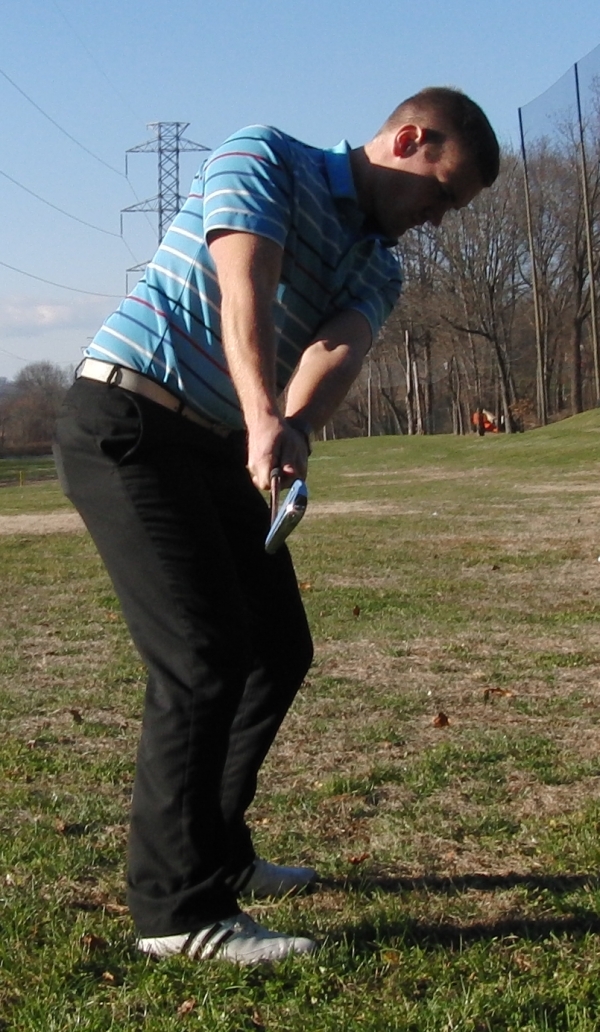

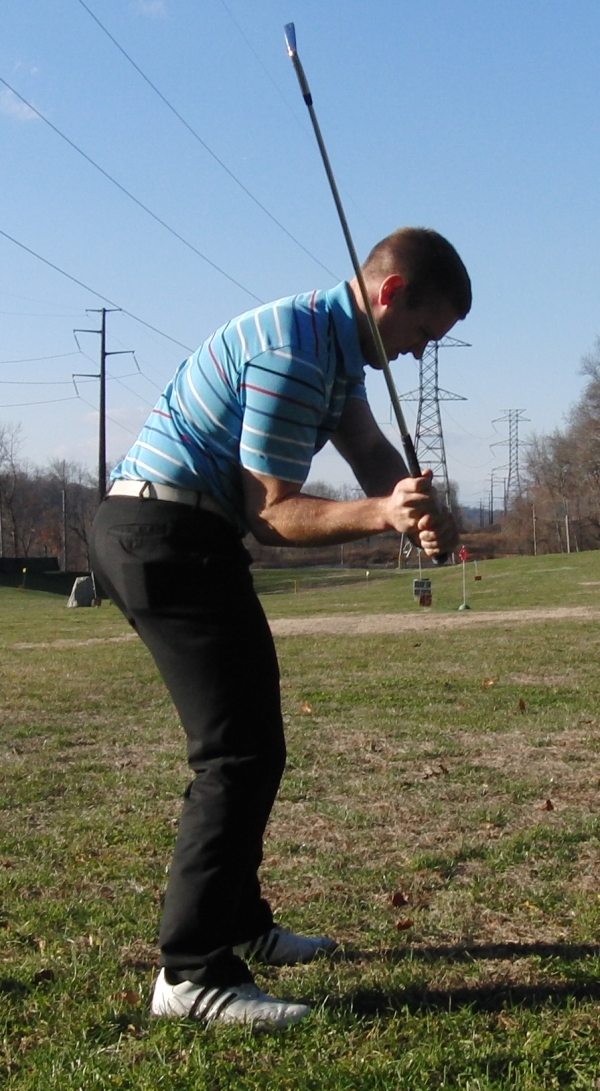
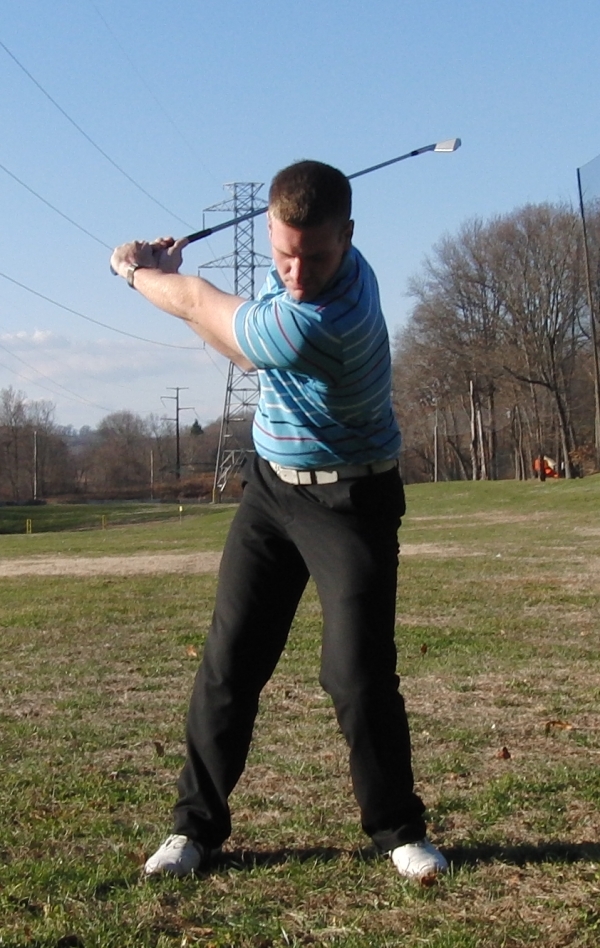














Stephane Gauthier
Apr 3, 2015 at 12:09 am
Great article. I recently stumbled upon this “method” by experimentation and reading more Hogan related stuff and it has greatly improved my strike.
For me it has become a natural trigger to my takeaway. It feel like I move rear hip back which prevents any swaying and gives me the feeling the club and hands is lagging behind (like Dufner). It also “feels” like I’m rotating in place as I feel very centered over the ball with this method. less sloppy.
Anyways, It’s nice to read confirmation that I’m doing the right thing. Thanks!
Stephane
colemantle
Aug 29, 2014 at 4:31 pm
Great article. I had recently fell into the trap of restricting my hip turn and my play got consistently worse with each round.Was sucking the club inside on my takeaway and all the other symptoms you mentioned. If i promoted an extreme outside take away I could manage to get some decent strikes but no consistency. Luckily my uncle was watching my swing and immediately noticed my hips not turning which led me to internet searching which led me to this article. Thanks for the tips!
Phil Murdock
Jul 1, 2014 at 1:12 am
I agree to a degree but, you should not purposely try to turn the hips immediately as that will also cause a flat,inside club and also left arm plane.This makes it very hard to get the club back to the ball on a descending blow.Especially with an iron and can cause drastic duck hooks with a driver if you don’t bottom out behind the ball first.Please correct me on his if i’m wrong.I have the best luck with a conscious shoulder turn to move the club back with minimal hip turn.Let the shouler turn dictate how much the hips turn.Depending on your age or flexability.Restricting the hip turn is definately hazardous though.I’ve been toying with this for 8 years and it is still not easy to exacute.I think a steady head(not locked in place) and a steady deliberate, no wrist braking take away initiated by the upper torso is key for power and more consistancy!!!
Scott Yurgalevicz
Jul 22, 2014 at 6:45 pm
Phil, you are spot on. The goal of this was to make sure you don’t purposely restrict your hip turn. Restricting the hip turn doesn’t allow the club to get deep enough at the top of the backswing. Much like everything, moderation is key. Find your happy Hip Turn place and stick to it.
John
Oct 18, 2013 at 11:21 am
Wow, I wish I would’ve looked up this article earlier in the season! It’s mid-October and here on the East Coast the season is winding down quickly. Anyway, I am a classic over the top, outside in path slicer. I’ve made bad adjustments to set up facing way left, extra strong grip, etc. to “play” my slice, i.e. a big banana ball that starts left and curves back to the fairway ( or most of the time , on the right side fringe of the rough) This of course robs me of distance and I’m usually faced with a long second shot into the green. So I’ve been going to the range a lot lately working on stuff , reading countless articles on shoulder turning and where your arms should be at the top of the backswing, etc., etc. I’ve also read about starting the downswing with the lower body, which I’ve gotten down, but if I’m not in the proper place to begin with, well then it’s still going to end up in trouble. Then I started thinking about just a good, solid hip/core turn for both back and down swings. Read something recently that made sense about “letting the arms just go along for the ride” and that they will find the proper plane that way….well went to the range and did just that. Low and behold, I was hitting DRAWS….draw after draw. I’ve never hit a draw in my life and although very excited thought it must’ve been a fluke. Did some more researching on-line, came across this very article and …well, you guessed it…back to the range! No fluke, hit all draws, not one slice!! So, I apologize for the long winded reply, but just wanted to say thanks for the confirmation of hips in the swing! It works for me and I hope it helps other slicer/over the topper/outside inners out there. Now just can’t wait to get out for another round!! 🙂
John
Scott Yurgalevicz
Jul 22, 2014 at 6:45 pm
This is the coolest response to one of my articles ever! Thanks for the great feedback!!!!!! 🙂
russell
Aug 1, 2013 at 5:35 pm
x factor by Jim Mclean he is along with Ledbetter hurt more golf swings than you can imagine,the best golf coach bar none Jimmy Ballard,and if you want proof check out the players he has coached in the last 25 years….
Jeff
Feb 27, 2013 at 5:12 pm
Amen Scott. Thanks for liberating the vast majority of golfers who are no longer 20 yrs. and cannot execute the x-factor without hurting their game or their back. Fortunately, I discovered this move some time ago, and found getting the club on plane to be much easier. Loss of distance? Correcting an over the top move will do wonders for your distance.
Jeff
Feb 26, 2013 at 9:56 am
I spent so many years working on the “X-Factor” that so many of the golf magazines support, but finally broke free of this advice. Just look at Bubba. He turns his hips more than most people turn their shoulders.
Thanks for the article, Scott.
Gene
Feb 25, 2013 at 3:22 pm
Scott,
how true, especially for senior golfers like me – I tried for a long time to keep my hips from rotating – it was supposedly to produce maximum power and once in a while it happened but more often than not, inconsistency reigned – once I started allowing my hips to turn naturally, everything fell into place – I am becoming much more consistent and in control of my swing -this is good instruction for those willing to listen and trust it!
Nick
Feb 19, 2013 at 11:53 am
I have often been confused by the advice not to restrict hip turn in the back swing. Snead had pronounced hip rotation in the backswing and I don’t hear anyone saying he had problems with power or accuracy in his ball striking. http://www.youtube.com/watch?v=7yzE5QODhtg
Scott Yurgalevicz
Feb 20, 2013 at 7:28 pm
Hey Nick, Thanks for the comment. I too was bewildered by the amount of students I get bumping their hips right and left in an effort to restrict hip turn in hopes of more power. Its almost comical how much better they get the moment I tell them to let them turn, almost every aspect of their swing gets better. By turning the hips you become an athlete!
brian cosgrove
Jul 9, 2013 at 9:34 am
Wow! I am 71 (6 handicap} and drift in and out of the backswing hip turn. Every time I go back to the hip turn move I srike it so much better. I think I worry about that old axiom of restricting the backswing hip turn. I am a Canadian instructor and have not used this much in my lessons but because of my success and your confirmation I will when needed. Thanks for the info.